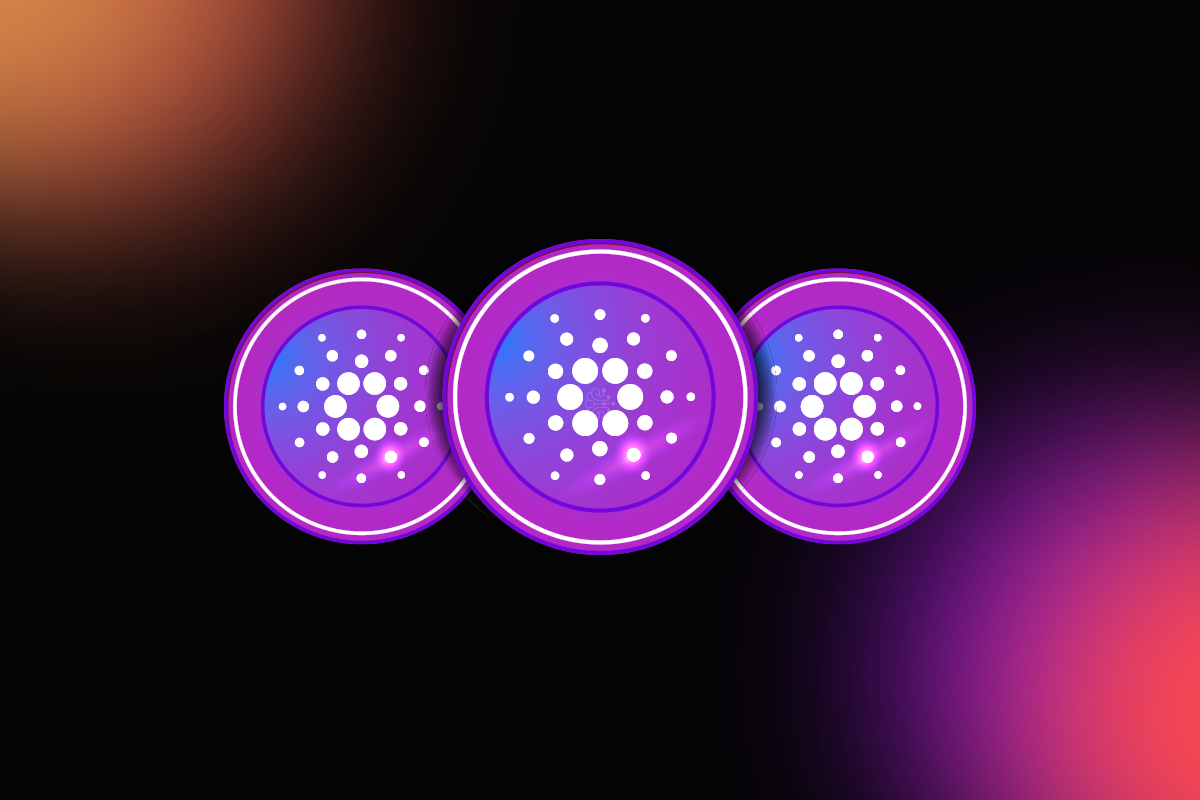What is Cardano?
Cardano is a decentralized public blockchain platform that facilitates peer-to-peer transactions through its native cryptocurrency, ADA. By market capitalization, Cardano is one of the biggest cryptocurrencies in the world. Today, it is one of the fastest growing ecosystems with over 3.3 million wallet addresses, hundreds of dApps being developed, and billions of dollars in transactions each week.

History
In 2015, Charles Hoskinson and Jeremy Wood founded Input Output (IOHK), the blockchain infrastructure research and engineering company behind the development and maintenance of Cardano. Charles Hoskinson, the key visionary of Cardano and a co-founder of Ethereum, created Cardano to correct many of perceived deficiencies of his formal project. Since 2015, the development of Cardano has advanced rapidly.
- 2017 — Cardano does a series of Initial Coin Offerings in Japan from 2015–2017 and starts publicly trading on its first exchange in the last quarter of 2017.
- 2020 — Cardano launches the Shelley mainnet with its novel Ouroboros consensus protocol, which is a delegated proof of stake mechanism. This mainnet update was a big step toward decentralization by allowing the community to secure the blockchain. ADA holders could obtain staking awards in two ways. You could become a stake pool operator (SPO), which is a full node who validates and adds blocks of transactions in return for ADA staking awards. You could also delegate your ADA to a SPO and share in the ADA staking awards every time that SPO added a block to the blockchain.
- March 2021 — Cardano’s block production becomes fully decentralized. Since Shelley launched in 2020, IOHK’s federated nodes were responsible for a declining percent of total block production. In March 2021, 1,800 SPOs, or non-federated nodes, became responsible for 100% of Cardano’s block production. Cardano also introduced the ability to create native tokens and NFTs.
- September 2021 — Cardano launches the Alonzo hard fork, entering the Goguen era of smart contracts. Before this update, Cardano was like Bitcoin in that transferring value, or ADA, was the only functionality. With the Alonzo update, Cardano became a smart contract platform, making it a direct competitor to the leading smart contract cryptocurrency Ethereum. Developers could now launch dApps like DEXs (decentralized exchanges), lending/borrowing protocols, yield aggregators, and many other DeFi and smart contract based applications.
- 2022 to present — Dozens of dApps are going live on Cardano. Over 900 smart contracts are in various stages of development. In addition, there are around 1.2 million addresses delegating around 24 billion ADA to over 3,000 SPOs.
Understanding Cardano
Cardano uses a delegated proof of stake mechanism. Cardano relies on invested participants, or SPOs, as validators. SPOs pledge their stake, or ADA, as part of the pool they operate, giving them a vested interest. The higher the pledge, the more ADA holders are likely to delegate to the SPO’s pool because the SPO is financially vested in the Cardano platform. Other ADA holders can be delegators, pledging their ADA to a SPO. The higher the total combined stake of the SPO and its delegators, up unto maximum threshold, the higher the chance the SPO has of getting selected to add a block of transactions. This model allows the number of validators to increase as usage of the network grows, as more people will be enticed to become SPOs as transaction volume and the price of ADA grows.
How is Cardano different from Ethereum and Bitcoin?
- Proof of work (PoW) vs Proof of stake (PoS)— In PoW platforms like Bitcoin and Ethereum, miners must race to calculate the hash of a block by adding a nonce, or value, to the block header repeatedly until the hash value yielded is less than or equal to the target hash. Miners spend a lot of money and processing powers racing to solve this mathematical puzzle first. Only one miner, with the closest hash that is less than or equal to the target hash, gets to produce a block. All other miners wasted processing power trying to find the correct hash value. This had led to criticism by environmentalists about how much energy PoW blockchains like Bitcoin and Ethereum uses, which some estimate to equal the equivalent energy use of small countries like Sweden or Malaysia. On the other hand, PoS platforms like Cardano typically use some form of a Verifiable Random Function, or VRF, to select block producers. Those SPOs with a higher stake have a higher chance of being selected. As SPOs on Cardano don’t have to race to produce a block, minimum processing power is needed as each SPO only needs to be available online to produce a block when selected. Charles Hoskinson has claimed that Cardano uses over 99% less energy than Bitcoin.
- Ethereum’s account model has concurrency but lacks parallelism— Concurrency is the ability for multiple entities to progress on a task without interfering with each other. Ethereum’s account-based model has a global state, meaning every transaction causes a change or update to the global state of prices and other data. This means that prices and other factors can change between the time a user submits a transaction and if or when it can be processed, resulting in higher fees or even a cancellation of the transaction. In addition, having a global state means Ethereum serializes transactions, which makes the current form of Ethereum bad for parallelism, or the ability to have multiple transactions happen at the same time.
- Cardano’s EUTxO model has concurrency and parallelism — Cardano uses the UTxO (unspent transaction output) model, similar to Bitcoin, in which there is no global state, and every transaction is a separate transaction output. UTxOs, which is like cash, are indivisible and your account balance is a list of all your UTxOs from previous transactions. This contrasts with Ethereum, where each transaction updates the global state of account balances, and each node refers to this global state when validating transactions. Full nodes in UTxO models like Cardano and Bitcoin keep track of all available UTxOs that are spendable. When a UTxO is created or consumed, it is recorded to the blockchain. Cardano goes a step further than bitcoin by having its EUTxO model, or extended unspent transaction output model, which adds smart contract capability. One of Cardano’s key advantages over Ethereum is that there is no global state. There can be hundreds or thousands of UTXOs that allow many transactions to progress and occur at the same time, which enables Cardano to have concurrency and parallelism.
- Cardano’s native tokens vs Ethereum’s tokens — In Ethereum, fungible tokens and NFTs created by projects are essentially smart contracts that use the Ethereum blockchain. Buying or selling these tokens requires interaction with a smart contract, which requires higher transaction costs. On Cardano, tokens such as GENS, GENSX, or NFTs are treated natively like ADA. This means they may interact with native tokens without the use of smart contracts. The benefit of this architecture can’t be understated, as native tokens on Cardano get the same security and transfer logic as ADA. In contrast, Ethereum’s tokens have more risk as the security of the token is based on how well the smart contract has been written by the developer. There are currently over 6,000 fungible token projects and over 5,000 NFT projects on Cardano.
What is next for Cardano in 2022?
Cardano is currently in the Basho era of its roadmap, which is focused on improving the scalability and interoperability of the network. Throughout 2022, increases in parameters such as block size, as well as major updates to the platform such as diffusion pipelining and script referencing, are expected to boost throughput significantly. In addition, projects like Mikomeda are live, allowing ERC-20 tokens on Ethereum to bridge their tokens to Cardano. If Cardano wishes to become the smart contract platform of choice, it will have to be scalable and secure for native projects while being interoperable with other blockchains like Ethereum.
Delegate Your Voting Power to FEED DRep in Cardano Governance.
DRep ID: drep12ukt4ctzmtf6l5rj76cddgf3dvuy0lfz7uky08jfvgr9ugaapz4 | We are driven to register as a DRep by our deep dedication to the Cardano ecosystem and our aspiration to take an active role in its development, ensuring that its progress stays true to the principles of decentralization, security, and community empowerment.DELEGATE VOTING POWER!








